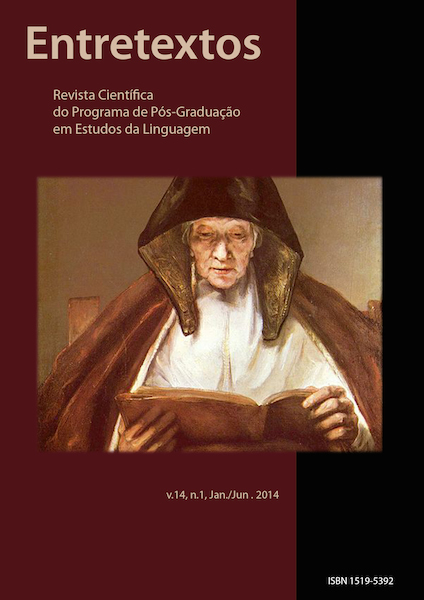The representation of feminine in the amazon mitopoese
DOI:
https://doi.org/10.5433/1519-5392.2014v14n1p138Keywords:
Mitopoese, Feminine, Imaginary, SymbolismAbstract
This article aims to analyze the character of a mythical Amazon oral narrative from her imaginary and symbolic construction. The mitopoese corresponds to the case of an old erveira who morphs into a jaguar and that tries to attack a young man of your community. In this case, the analysis will be made from the imaginary which surrounds the negative valuation of this lady, valuation that is representation. Therefore, the analysis began with reading the field of symbology (CHEVALIER; GHEERBRANT, 2009) and the concept of imaginary of Mafessoli (2001) to understand that the image formed of women is beyond the factual reality, composing a reality sensitized, another way of representing. The way the image of woman is formed in that narrative also passes by reading Beauvoir (1961) since the way of the feminine image is put on the scene it creates a discourse which is also representation of the fear that has formed about this sex.
Downloads
References
BENJAMIN, W. O Narrador: considerações sobre a obra de Nikolai Leskov. In: BENJAMIN, W. Magia e técnica, arte e política: ensaios sobre literatura e história da cultura. São Paulo: Brasiliense, 1987, p. 197-221.
BULFINCH, T. O livro de ouro da mitologia: história de deuses e heróis. Rio de Janeiro: Ediouro, 2006.
CASCUDO, L. da C. Dicionário do folclore brasileiro. São Paulo: Global, 2001.
CHEVALIER, J.; GHEERBRANT, A. Dicionário de Símbolos: mitos, sonhos, costumes, gestos, formas, figuras, cores, números. Rio de Janeiro: José Olympio, 2009.
DIEGUES, A. C. Ilhas e mares: simbolismo e imaginário. São Paulo: Hucitec, 1998.
DURAND, G. O imaginário: ensaio acerca das ciências e da filosofia da imagem. Rio de Janeiro: Difel, 1998. FARES, Josebel Akel. Imagens da matinta perera em contexto amazônico. Revista Boitatá, Londrina, v. 3, jan./jun, p. 62-78, 2007.
FERREIRA, A. B. de H. Miniaurélio século XXI escolar: O minidicionário da língua portuguesa. Rio de Janeiro: Nova Fronteira, 2001.
LE GOFF, J. História e Memória. Campinas, SP: Unicamp, 2003.
MAFFESOLI, Michel. O imaginário é uma realidade. Revista FAMECOS: mídia, cultura e tecnologia, Porto Alegre, v. 1, n. 15, ago. 2001. Disponibilidade em: http://www.revistas.univerciencias.org/index.php/famecos/article/view/285/21. Acesso em: 21 de abr. de 2012.
OLIVEIRA, J. C. Folclore Amazônico: lendas. Belém, Pa: São José, 1951.
PORTELLI, A. Ensaios de História Oral. São Paulo: Letra e Voz, 2010.
PORTELLI, A. História Oral como Gênero. Projeto História. São Paulo, 2001.
THOMPSON, P. A Voz do Passado: história oral. Rio de Janeiro: Paz e Terra, 1992.
VIVEIROS DE CASTRO, E. [Palestra] A morte como quase acontecimento. Disponibilidade em: . Acesso em: 19 de mar. de 2012.
VIVEIROS DE CASTRO, E. A Inconstância da Alma Selvagem: e outros ensaios de antropologia. São Paulo: Cosac Naify, 2011.
Downloads
Published
How to Cite
Issue
Section
License
Entretextos adota a Licença Creative Commons Attribution 4.0 International, portanto, os direitos autorais relativos aos artigos publicados são do(s) autor (es).
Sob essa licença é possível: Compartilhar - copiar e redistribuir o material em qualquer suporte ou formato. Adaptar - remixar, transformar, e criar a partir do material, atribuindo o devido crédito e prover um link para a licença e indicar se mudanças foram feitas.




















